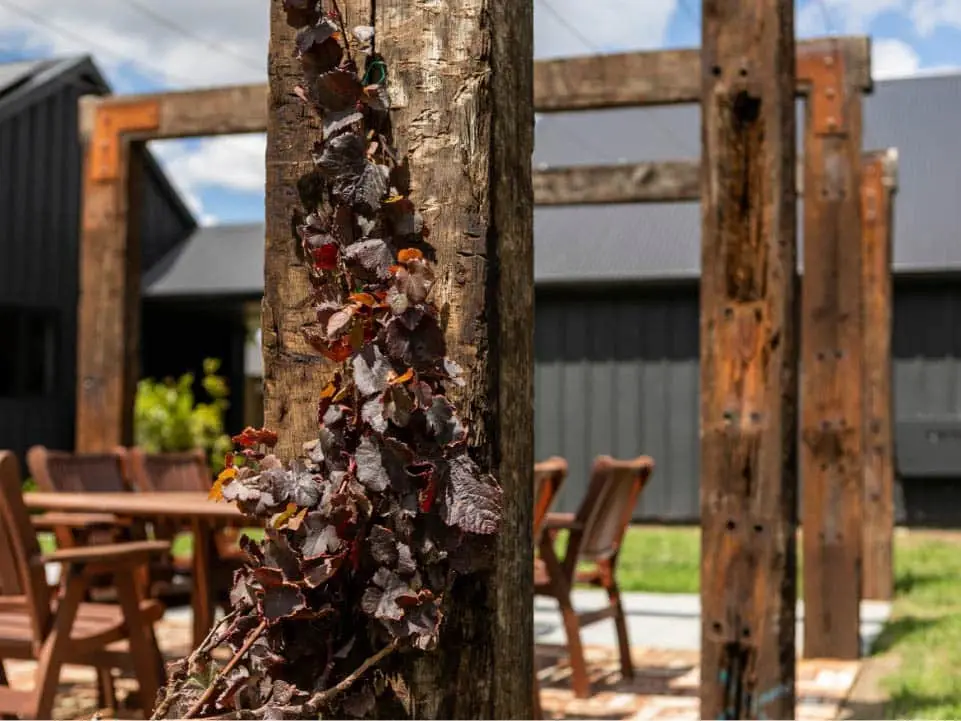The building industry is working to reduce its carbon emissions by using sustainably sourced and reclaimed materials, including locally sourced and recycled or repurposed materials. Reclaimed timbers are a good choice as they release carbon more slowly into the atmosphere and can be repurposed for many years, reducing the need for landfill or burn-off disposal.
The NZ building environment presently accounts for approximately 20% of New Zealand’s total carbon emissions. This statistic needs to dramatically improve, and can be achieved with an environmentally conscious consumer mindset. This requires a change in thinking as regards material selection and performance, and starts with the predominant factor of environmental stewardship and increased focus on using sustainably sourced and reclaimed materials.
Reducing carbon emissions
This growing demand for sustainably sourced materials both in New Zealand and globally creates a first step of seeing carbon reduction as a critical principle early in the design stage.
Consumers are consciously choosing to use more planet-healthy materials, even though some increased costs may be associated with this decision.
IN BRIEF
- The building industry is using reclaimed materials to reduce carbon emissions.
- Consumers are choosing environmentally friendly materials, despite potential increased costs.
- Reclaimed timbers release carbon more slowly and can be repurposed for many years, reducing the need for disposal.
Organisations like the NZ Green Building Council, Sustainable Business Network and the Living Future Institute provide resources and knowledge to help architects, builders, and individuals reduce carbon in the NZ building environment.

Good for the environment and the aesthetics
Interlink has a core commitment to repurpose rustic timbers. It is the national supplier to ITM, providing its customers with easier access to reclaimed timbers, helping minimize environmental impact.
Reclaimed timbers also provide a pleasing aesthetic compared to manmade alternatives, and in addition, many have a colourful history that makes an interesting story.
Reclaimed timbers provide architectural scale and can be used for applications like beams, trusses, mantels, and lintels, as well as simple elements such as internal and external cladding, landscape features, pergolas, retaining walls, and steps, to name but a few..
Rustic timbers provide a sense of uniqueness that is eye-catching and evokes comment. No two pieces are ever the same, and all have a unique backstory and future.

Progress is being made with better material selection and the reduction of emissions in resource extraction, manufacturing and transportation. There is also a growing global demand for transparency in supply chains and builds, with an expectation that ecosystems are preserved and that more significant conservation efforts are made using ecologically and sustainably sourced materials.
UK Oak Sleepers were used for this pergola in Bombay, Auckland. Photo credit: Luijten Landscapes.
Basic first steps
The first step can be as simple as sourcing locally, thus reducing shipping and transportation carbon emissions and avoiding overseas manufacturing processes, which may have little or no regulations protecting the environment.
Recycled hardwood timbers
A second step is the use of recycled and repurposed materials. Recycled hardwood timbers show a slower release of carbon into
our atmosphere, which is particularly relevant to reducing global warming.
Avoiding landfills and burn-offs by re-purposing timbers and other materials for another 30-50+ years can significantly reduce carbon. These aspects of environmental consciousness are becoming increasingly relevant as environmental awareness continues to rise.
Everyone has a part to play
Help reduce our national and global output of CO² by using sustainable and reclaimed materials. Carbon reduction is no longer exclusively for the eco-savvy consumer. It is now a concern at the forefront of decision-making for all individuals, organisations and industries, helping to create change for the better.

This article was first published in the ITM Building Business Magazine, a leading publication dedicated to providing insights and information on the latest developments in the construction and building industry.

